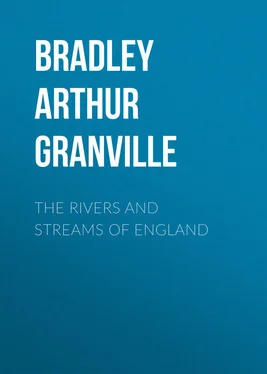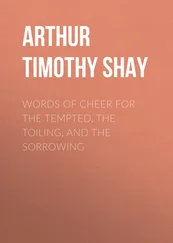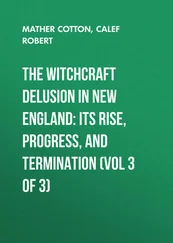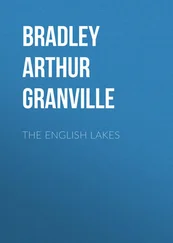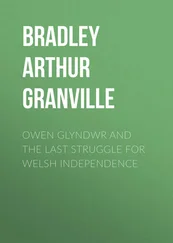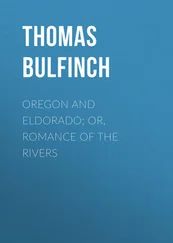Arthur Bradley - The Rivers and Streams of England
Здесь есть возможность читать онлайн «Arthur Bradley - The Rivers and Streams of England» — ознакомительный отрывок электронной книги совершенно бесплатно, а после прочтения отрывка купить полную версию. В некоторых случаях можно слушать аудио, скачать через торрент в формате fb2 и присутствует краткое содержание. Жанр: foreign_language, foreign_antique, foreign_prose, Путешествия и география, на английском языке. Описание произведения, (предисловие) а так же отзывы посетителей доступны на портале библиотеки ЛибКат.
- Название:The Rivers and Streams of England
- Автор:
- Жанр:
- Год:неизвестен
- ISBN:нет данных
- Рейтинг книги:3 / 5. Голосов: 1
-
Избранное:Добавить в избранное
- Отзывы:
-
Ваша оценка:
- 60
- 1
- 2
- 3
- 4
- 5
The Rivers and Streams of England: краткое содержание, описание и аннотация
Предлагаем к чтению аннотацию, описание, краткое содержание или предисловие (зависит от того, что написал сам автор книги «The Rivers and Streams of England»). Если вы не нашли необходимую информацию о книге — напишите в комментариях, мы постараемся отыскать её.
The Rivers and Streams of England — читать онлайн ознакомительный отрывок
Ниже представлен текст книги, разбитый по страницам. Система сохранения места последней прочитанной страницы, позволяет с удобством читать онлайн бесплатно книгу «The Rivers and Streams of England», без необходимости каждый раз заново искать на чём Вы остановились. Поставьте закладку, и сможете в любой момент перейти на страницу, на которой закончили чтение.
Интервал:
Закладка:
For myself, I know of a score of such valley heads in the North and Wales, whence streams and rivers have their birth, that provoke a feeling of positive and pleasurable creepiness, such as the wildest woods and the remotest prairies never touched me with. Whether opening and shutting in a driving winter mist, or with their high rocky shoulders turned gloomily from the sun on a fine autumn morning, these inner sanctuaries and water-sheds where so many of our English rivers rise seem as if they gathered the silence of unlimited wastes and distilled its very essence. The very sounds that break their solitude, intensify it: the plashing of the tiny stream when it has struggled out of the meshes of the high bog that gives it birth, and is taking its first leap for liberty and independence down the rocky ledges of the precipice towards the world below, the mournful call of the curlew, the fitful, plaintive bleat of the mountain sheep, or the faint rattle of stones misplaced by its nimble feet. Poets have written of the “startled air,” and some of them perhaps have used the phrase but tritely, and themselves but half suspecting the true felicity of the metaphor. In these sombre chambers of the hills, walled in upon every side, the stillness seems literally to grasp at every slight sound and cling to it with strange vibrations and lingering echoes, which remind one how utterly alien to these places are the common sounds of the everyday world that pass unnoticed – a world so ridiculously near and yet so infinitely remote.
Among the outstanding geographical facts which used to be hammered into the heads of schoolboys was that of Plinlimmon being the parent of both the Severn and the Wye. Many poems both in Welsh and English have been inspired by this picture of two infant streams springing from the bosom of the same mountain, and after following widely sundered courses through various counties, meeting again as great rivers, just in time to mingle their waters before merging them in the brine. It would be a pretty conceit even if it were not in the case of these two rivers an actual fact. Whether
it is on this account, or because of the huge bulk and prominent situation of Plinlimmon, many “eminent geographers” of not very remote days wrote it down for the benefit of generations of misguided students as the third loftiest mountain in Wales. But it is not even in the first rank, being less than 2500 feet. There are several mountains in South Wales alone of greater altitude and more graceful shape. But Plinlimmon, all the same, is a fine upstanding mass of wild bog, linked upon both sides to far-spreading solitudes, and worthy to be the mother of the greatest and of the most beautiful river respectively in England or Wales.
That the former deserves the epithet is a mere geographical fact. That the Wye contains a greater mileage of the highest types of British scenery than any other river, will surely be conceded by any one sufficiently equipped with a knowledge of British rivers to pronounce an opinion worth having and not disqualified by too intimate personal association with some other possible claimant. For it is the only river in the country that rises to the highest scale of physical beauty and distinction as we know them in Britain, both in its earlier and its later stages. A few large rivers, notably the Cheshire Dee, the Usk, the Tynes, the Tees, and of course many smaller ones in the north and west, compare with the Wye, though few surpass it in their higher reaches, being all distinguished by the same type of rugged and mountainous scenery. But none of them, after they have left such associations behind and become by comparison low-country rivers on their progress to the sea, break out again like the Wye for such a long period of their later course in scenes that vie with those of its youth and are among the recognised gems of British scenery.
The fountain springs of the Severn and the Wye are less than a mile apart on the long slope of Plinlimmon. The one flowing north-east, the other south-east, there is little to choose between them as they fume and fret in their sombre mountain cradles or sparkle among the narrow stone-walled meadows, the little white-washed sycamore-shaded homesteads of the upland farms. The Wye has greater things in store for her than even the wild foothills of Plinlimmon as she dashes off into the mountain gorges of Radnorshire and Brecon. But the Severn, though flowing always from source to mouth through a landscape consistently fair and often striking, seldom rises to the level maintained by her younger sister for more than half of her journey to the sea. The Severn, called hereabouts the Hafryn by the Welsh, may be said to emerge into civilization near the little Montgomeryshire town of Llanidloes, noted for its sheep fairs and its fish poachers. Here it meets, to follow northwards the only railroad which even now links North and South Wales. This will have brought with it over the wild heathery moorland watershed between Wye and Severn, where dark brooding hills enclose the region of Pant-y-dwr (Hollow of the waters), the brown streams of the Tylerch. The Clywedog meeting the other two just below their junction, the Severn now becomes a lusty little river, brawling incessantly upon a wide stony bed.
Of the thousands of tourists who every season travel on the Cambrian railway to the Welsh watering-places, few probably realise that the little trout stream which prattles in and out of the line in the high country around Moat Lane Junction bears the name of the greatest, though truly the second in fame, of English rivers. From first to last the Severn is faithful to Montgomeryshire as the Welsh county of its birth. From Blaen Hafryn, its source on Plinlimmon, just within the county bounds, for some 50 miles straight measure along its valley – all the way, indeed, from Llanidloes to the Breiddon Hills – it waters the richest pastures and the fattest corn lands of the ancient kingdom of Powys Fadog. But if the Severn drains the richest portion of this most delectable and highland country, it must not be supposed that its environment is tame or its streams lazy. Everywhere to the right and to the left lofty hills, though for the most part somewhat back-lying, bound the limits of the vale, while now and again a glimpse of some distant mountain serves to remind one that Montgomeryshire is in the main a mountain county. For the Severn valley is so intercepted with small hills, so richly wooded, so ornate in places with the park lands and foliage of country seats, so sprinkled with pleasant villages, one is apt to forget that the little streams hurrying down to the river from the north come from a really wild Wales beyond, while lying back to the south the regions of Kerry and Clun speak in their very names to the initiated of the spirit of solitude.
But the human or certainly the historic interest of Montgomeryshire and much of its visible wealth clusters along this broad and broken vale of the Severn. Newtown and its flannel industries and the name of Pryce-Jones will strike a responsive note in the ear of every British housewife. But the stern fragments of Montgomery Castle, perched on the summit of a rock 350 feet above the river, is perhaps more in harmony with the mood in which we should follow an historic artery through this Border country. The little town, absolutely the smallest and most somnolent county capital in the two countries, lies behind the rocky castle height. The Norman, Roger of Montgomery, was granted this country by his friend and chief William the Conqueror, who appears to have assumed it was in Shropshire, because Offa’s Dyke crosses the river near by. This misconception soon became apparent, and though the well-nigh impregnable castle, called always Tre-Faldwin by the Welsh after Roger’s constable, Baldwin, was retained in Anglo-Norman hands, it is not too much to say that it was a centre of strife between the Welsh and English for 200 years, till Edward the First completed the conquest of Wales and created the North Welsh counties, this one being fortunate in acquiring the sonorous name which had clung to the castle and lordship. The actual building, whose scant fragments are now so conspicuous and suggestive, was erected by Henry the Third, who in his troubles with his barons was compelled to promise Llewelyn the Second or “the Great” that this should be the uttermost western limit of his pretensions to dominion.
Читать дальшеИнтервал:
Закладка:
Похожие книги на «The Rivers and Streams of England»
Представляем Вашему вниманию похожие книги на «The Rivers and Streams of England» списком для выбора. Мы отобрали схожую по названию и смыслу литературу в надежде предоставить читателям больше вариантов отыскать новые, интересные, ещё непрочитанные произведения.
Обсуждение, отзывы о книге «The Rivers and Streams of England» и просто собственные мнения читателей. Оставьте ваши комментарии, напишите, что Вы думаете о произведении, его смысле или главных героях. Укажите что конкретно понравилось, а что нет, и почему Вы так считаете.
